We report on how the latest acoustic technology was employed on Foster’s striking new music facility to ensure it rivals the best in the world.
Arup’s latest piece of acoustic technology has helped create one of the world’s finest music performance venues. Opened in late 2004 The Sage Gateshead realises the ambitions of Gateshead Metropolitan borough council to create a world-class music facility, and a new home for the Northern Sinfonia orchestra.
The venue, designed by Foster and Partners, comprises: Hall One, a 1700 seat shoebox-shaped concert hall; Hall Two, a 400 seat space designed to host a wide range of music styles; the Northern Rock Foundation hall, a purpose built orchestral rehearsal space but also suitable as a recital and performance space; the Music Education Centre, with its teaching and practice facilities and recording studio; the Barbour Room, a 300 capacity entertainment space; and ExploreMusic, a music information resource centre.
Consulting engineer Arup was appointed to design the acoustics. A number of techniques were employed on the main performance spaces to ensure they met the standards comparable with the world’s best concert facilities, which included benchmarking the space against other venues, computer modelling the performance halls, and the use of Arup’s newly developed SoundLab to help commission the venue’s acoustics.
The SoundLab was developed to enable a room’s acoustic design to be perfected before it is built. The technology allows the acoustic conditions of a room to be reproduced precisely so that a piece of music can be heard just as it would from any position in that venue. To model the sound, a central seat in the middle of the lab is surrounded by head height speakers on all sides, each playing the music from the direction it would come in the actual space. Professional audio software, Max, is used to work out all the time delays for the different speakers to give the impression that the listener is inside a much bigger space.
The technology enables a listener to switch, virtually, between different performance spaces while the same piece of music is being played, enabling an acoustic comparison to be made between venues. Computer models of the space are also generated on a separate programme to predict what the music will sound like in a space before it is built.
By modelling the acoustic characteristics of the room the room’s response can be predicted. “We mix that response with a piece of music or speech which has been anechoically recorded in an environment with no reflections,” says Ian Knowles, an associate at Arup Acoustics. “That gives us the sound of that music in the room that we’ve modelled,” he adds.
For the Gateshead scheme, a computer model of each hall’s interior was created. The interior surfaces were then given an absorption property – whether it reflects or absorbs the sound – as well as a value, which represents how well it scatters the sound. Knowles explains: “A virtual loudspeaker was put inside the model of the space. We then have a receiver position that takes in the reflections from different directions and that can generate a different impulse response time, enabling us to work out what the music will sound like from different positions in the hall.”
However, before Arup could use SoundLab on the Sage model it had to be calibrated using measurements taken from real concert halls. A survey of 50 concert halls in Europe was undertaken to measure the impulse response times in each one. Models were then generated for some of those halls to ensure the modelled sound reproduced exactly the real sound.
Knowles says this process gave Arup confidence that the software was producing scientifically accurate results. “There was a consistent difference between the measured halls and the modelled halls so we can apply a simple equalizing process. The modelling software is good at predicting the directional response, so we’ve applied that equalizing to the halls that haven’t been built yet and we’re confident of what they are going to sound like.”
In order to put the Sage in amongst the top venues in the world, the SoundLab’s ability to compare different venues was used to test the virtual acoustics of Hall One against the actual recordings from the Concertgebouw of Amsterdam and Vienna’s Musikverein. These are arguably the two greatest concert halls in the world; when the Sage was modelled it took into account a lot of their features. In terms of width, the shoebox shaped Sage is much closer to the shape of the Austrian venue. Knowles says: “In a narrower room, the sound can’t go as far and you get a stronger noise. The reflections off the side walls are important to your perceptions of the orchestra and a lot of people find that even though the walls are closer together, it feels like the orchestra is bigger than it looks which a lot of people enjoy.
“The narrow walls send the energy straight back to your ears quicker than they can decipher the direct sound from the reflected sound, so they think it’s all direct sound, you’re getting more energy to your ears sooner and it sounds much more powerful.” In a wide hall such as the Concertgebouw, the greater time taken for the sound to reflect off the walls means that the audience is more aware of the fact that they are in a bigger space and the orchestra goes back down to its real size.
Once construction was complete, Arup Acoustics spent three months commissioning the concert halls, a process that saw a number of different musical groups run through rehearsals to ensure the spaces were set up correctly for each genre. Hall One is best suited for chamber orchestra performances; it has six adjustable ceiling panels that allow the room height to be varied between 10 m and 20 m from stage level to suit the orchestra size, the type of music being played and the optimum sound reflections required. Each panel can be set at a different height, or the entire group can be lowered as one.
“The SoundLab wasn’t used in the actual design of the Sage at all because it only began as a project some eight years ago, but it was used to commission the settings of the reflectors,” Knowles explains. These are designed to reduce the volume of the room, to control how the sound was reflected from the stage to project their energy into the room.
“SoundLab was used to listen to the different settings of those reflectors to decide the best ones for different musical uses,” explains Knowles. “So we had pre-commissioned the room before we actually went in which made it much easier. We preset all the reflector heights that we thought were right before the orchestras actually came to rehearse and from that starting point we didn’t have to tweak them too much.”
Lowering the whole ceiling reduces room reverberance, ideal for smaller groups that require less ‘live’ conditions. Motorised sound-absorbing curtains can also be used to cover 90% of the wall area. They are deployed level by level from the ceiling down. The ‘top hat’ level curtains are used to reduce the reverberance for performance types such as modern classical music. They can be lowered to tier two for performances with a larger mix of acoustic and amplified instruments, and tier one curtains are used for speech events such as cabaret and comedy. In addition they can be used to cover the walls in the stalls area for loud amplified music.
The use of the SoundLab in the commissioning of the Sage has ensured that the quality of the performance spaces meets the world class benchmark, a fact that was emphasised by the orchestra who can now call the arena home. Knowles says: “The Northern Sinfonia actually toured the Musikverein and the Concertgebouw, and they couldn’t wait to get back to Gateshead because they felt the sound was so much better there.”
Making a noise about SoundLab
Arup’s SoundLab has enabled clients to make informed decisions about their projects at the design stage. Arup Acoustics associate, Ian Knowles says: “It’s a process of empowering the client. It demystifies acoustics and allows the client to come in and make up his own mind without having to make a choice based on a regulation or a report that doesn’t mean anything to him. “
As well as performance spaces, SoundLab technology is being used in the design of pa systems, notably for the new Terminal 5 at Heathrow and for Foster’s new railway terminal in Florence. “It gives people much more confidence in the design of the building, they can come and hear the speech intelligibility and determine whether they can hear what’s being said,” adds Knowles.
On the Florence project, Arup Acoustics was responsible for the intelligibility of the pa system in a space made up largely of glass, concrete and marble – a very poor space acoustically. The station was modelled and three options were presented, each using recorded pa announcements and recordings of the actual trains that will be operating in and out of the station. Each option varied in its type of loud speaker and its use of absorption. This enabled the client to listen to the differences in the clarity of the three choices and to make their decision based on those differences.
The UK SoundLab has also been used on the National Sound archive building, an addition to the British Library on potentially one of the worst sites for noise in London – train and tube lines run both underneath and along side the site. Ground bore measurements were taken to gauge the vibrations on the site which indicated that the recording studios in the building would be quietest if they were ‘floated’ to have optimum control over the train noise.
Knowles says: “There is a substantial cost involved with floating the rooms, so we got them into the lab and did a simple demonstration that showed them the noise criteria they were talking about and allowed them to hear what the trains would sound like if they floated the rooms and if they didn’t float the rooms. After that it was their decision to make.
Source
�ǿմ�ý Sustainable Design


















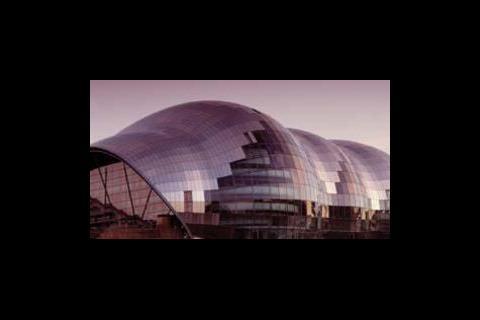
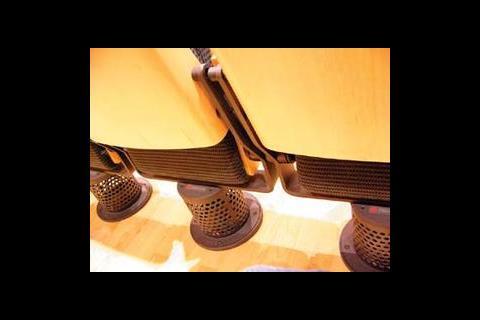
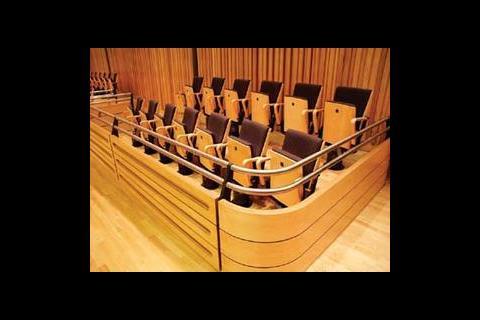

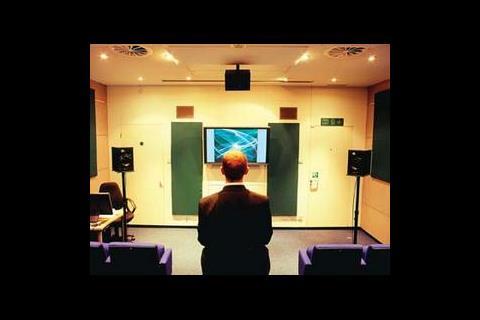
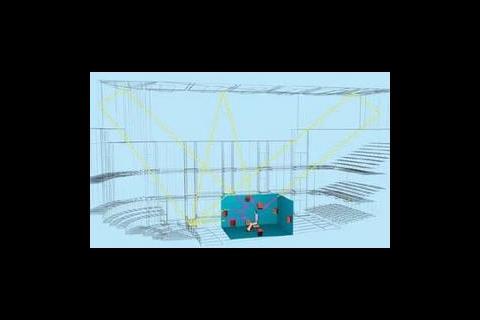
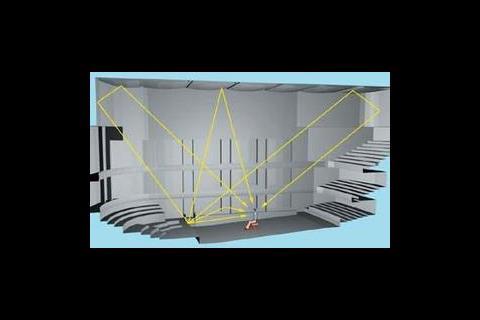
No comments yet